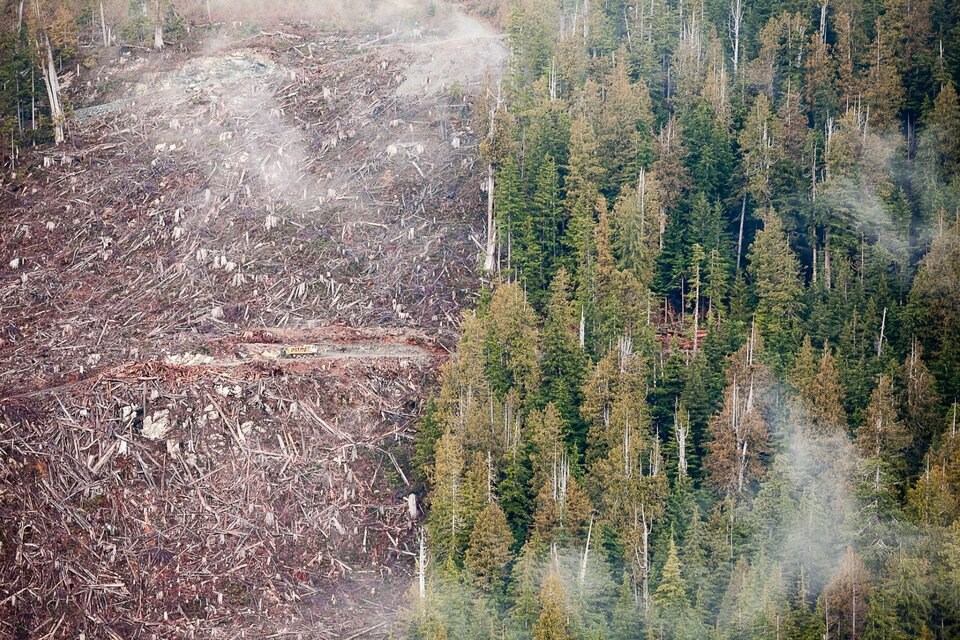The amount of old-growth forests cut in British Columbia in 2021 was almost a fifth higher than the provincial government reported, according to a new analysis.
The report, released Wednesday by the Sierra Club BC, found 45,700 hectares of old forest were logged that year, more than 19 per cent higher than the 38,300 hectares later reported by the B.C. government.
“We need more honesty about what’s happening,” said Jens Wieting, the Sierra Club BC’s senior forest and climate campaigner. “We found some really disturbing numbers.”
Previous government statements suggested that old-growth logging was relatively stable over the past three years. In November 2022, then Minister of Forests Katrine Conroy said the 2021 old-growth harvesting data represented “record lows” and showed “B.C. is on the right track” to improve long-term forest management.
But according to the new analysis, instead of falling “to the lowest level on record” as reported by the province, old-growth logging increased by a fifth — equal to roughly 18 Stanley Parks or half the area of the City of New Westminster.
Wieting says the province is using an outdated system to compile annual logging information. That system relies on inputting cutblock information from logging companies and from Landsat satellite data into a government database. But that process can take more than a year to provide a complete picture, said the Sierra Club BC in its analysis.
A spokesperson with the Ministry of Forests did not refute any of the numbers put forward by the Sierra Club BC.
In a statement, the ministry said it has been been working to make data on B.C.'s forests more accessible to the public through satellite-based change detection and data collection.
“B.C.’s forests are critically important to people, communities and wildlife,” said the spokesperson in an email. “We’re determined to look after our oldest and rarest forests, and we’ll have more updates to share in the months ahead.”
By severely underreporting how much old-growth forest was logged in 2021, Wieting says the government continues to flout the Old Growth Strategic Review’s 14 recommendations it has committed to, specifically recommendation number five, which calls on the province to “Provide the public with timely and objective information about forest conditions and trends.”
Other countries have been able to accurately report on national logging trends in nearly real time. In Brazil for example, the Deter satellite alert system recorded an almost 60 per cent drop in deforestation in the Brazilian Amazon between July 2022 and July 2023. Those results were available within the first few days of August.
But in B.C., Wieting says the public is regularly deprived of such timely reporting on basic logging trends.
“Every week, every month old growth that were proposed for deferrals are getting logged and we’re not hearing about it,” said Wieting. “We’re now in October 2023 and we still don’t have data from 2022.”
“We’re still in the dark about which forests specifically have been set aside.”



